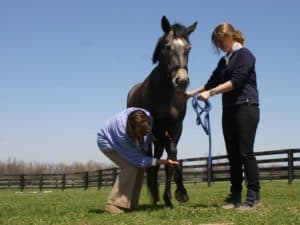Horse Hoof Abscess Facts

Fact: Complications can delay hoof abscess healing.
Fact: In most cases, horses recover well.
And, until recently, there wasn’t much more scientific data on subsolar abscesses than that. So researchers from the University of Pennsylvania School of Veterinary Medicine (Penn Vet) set out to put more hard data behind these common hoof ailments. They wanted to identify trends that could help horse owners and their veterinarians better manage abscesses and more accurately anticipate how they’ll heal and if they’re likely to develop complications
Create a free account with TheHorse.com to view this content.
TheHorse.com is home to thousands of free articles about horse health care. In order to access some of our exclusive free content, you must be signed into TheHorse.com.
Start your free account today!
Already have an account?
and continue reading.

Written by:
Christa Lesté-Lasserre, MA
Related Articles
Stay on top of the most recent Horse Health news with












